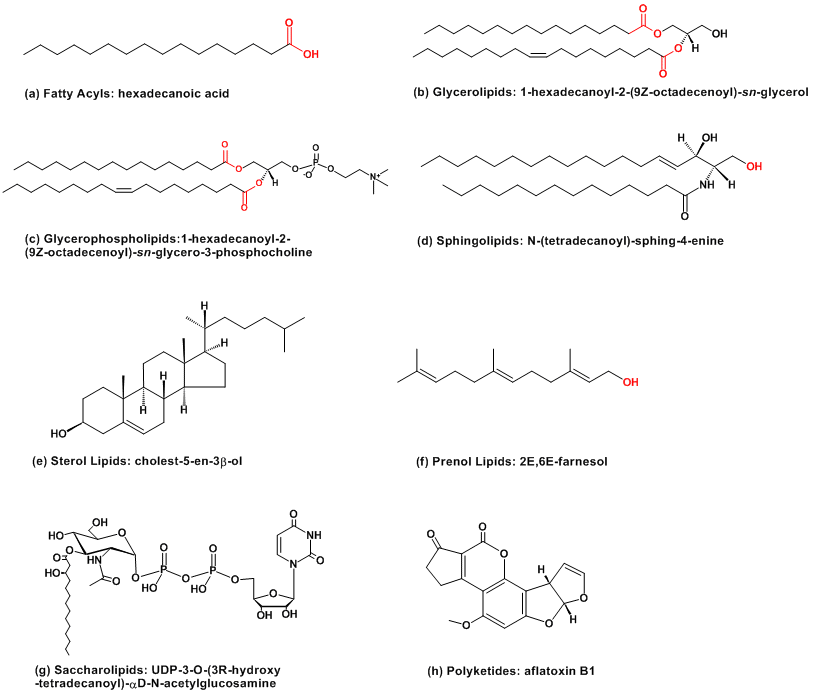Lipid structure representation in LIPID MAPS databases
Use our Structure Drawing Tool to generate lipid structures
Large and complex lipids are difficult to draw, which leads to the use of short hand and unique formats that often generate more confusion than clarity among lipidologists. We propose a more consistent format for representing lipid structures where, in the simplest case of the fatty acyl derivatives, the acid group (or equivalent) is drawn on the right and the hydrophobic hydrocarbon chain is on the left (see Fig. 1). Notable exceptions are found in the eicosanoid class where the hydrocarbon chain wraps around in a counterclockwise direction to produce a more condensed structure. Similarly, with regard to the glycerolipids and glycerophospholipids, the radyl chains are drawn with the hydrocarbon chains to the left and the glycerol group depicted horizontally with stereochemistry at the sn carbons defined (if known). The general term radyl is used to denote either acyl, alkyl, or 1-alkenyl substituents (http://www.chem.qmul.ac.uk/iupac/lipid/lip1n2.html), allowing for coverage of alkyl and 1Z-alkenylglycerols. The sphingolipids, although they do not contain a glycerol group, have a similar structural relationship to the glycerophospholipids in many cases and may be drawn with the C1 hydroxyl group of the long-chain base to the right and the alkyl portion to the left. This methodology places the head groups of both sphingolipids and glycerophospholipids on the right hand side. In addition, the linear prenol lipids are drawn in a fashion analogous to the fatty acids with the terminal functional group on the right hand side. Sterol lipids are universally drawn with the A ring at bottom-left and the 5-membered D ring at top-right. Inevitably a number of structurally complex lipids, such as acylaminosugar glycans, polycyclic isoprenoids, and polyketides do not lend themselves to these simplified drawing rules. Nevertheless, we believe that the adoption of the guidelines proposed here will unify chemical representation and make it more comprehensible.
Many classes of lipids lend themselves well as targets for automated structure-drawing, due to their consistent 2-dimensional layout. A suite of structure-drawing tools has been developed and deployed which permit in-silico generation of structures, systematic names and abbreviations. The structures may be viewed and exported in a variety of formats. Online versions of the structure drawing tools for fatty acyls, glycerolipids, glycerophospholipids, sphingolipids, and sterols are available in the Tools section of the LIPID MAPS website. Examples of structures for the 8 lipid categories are shown in the figure below.
